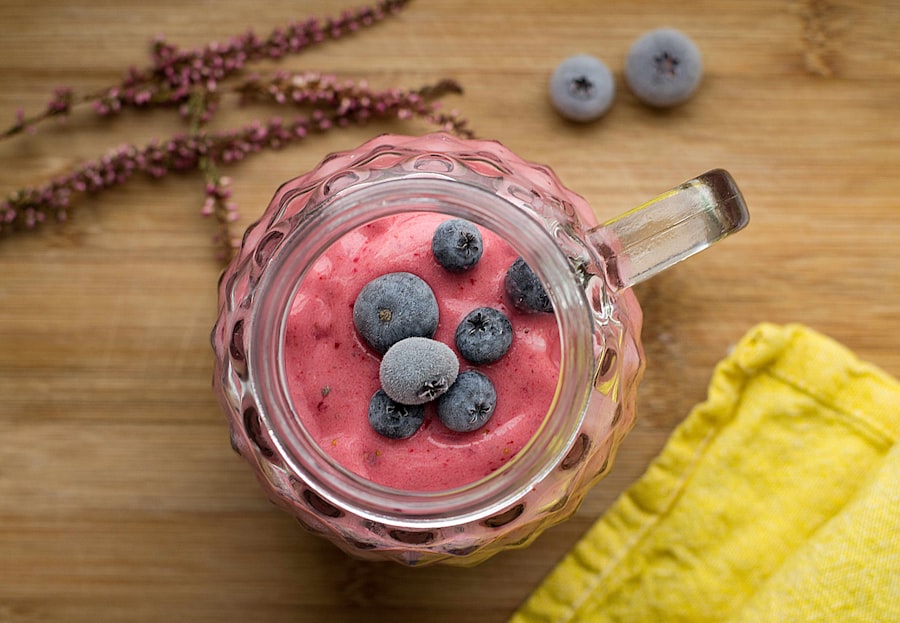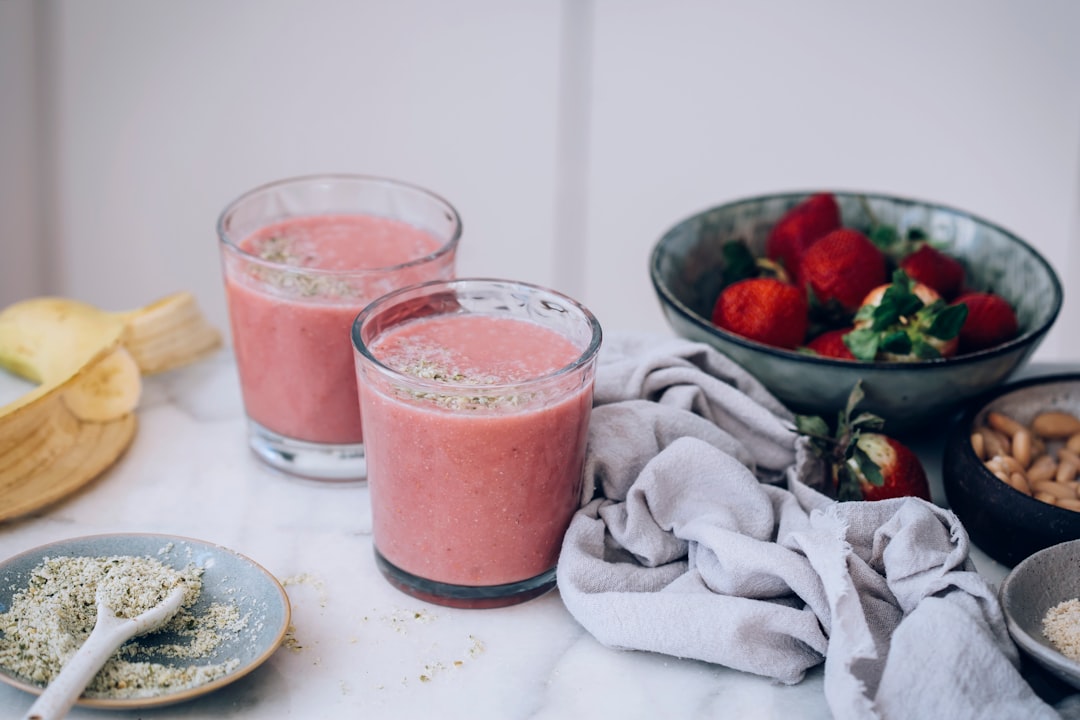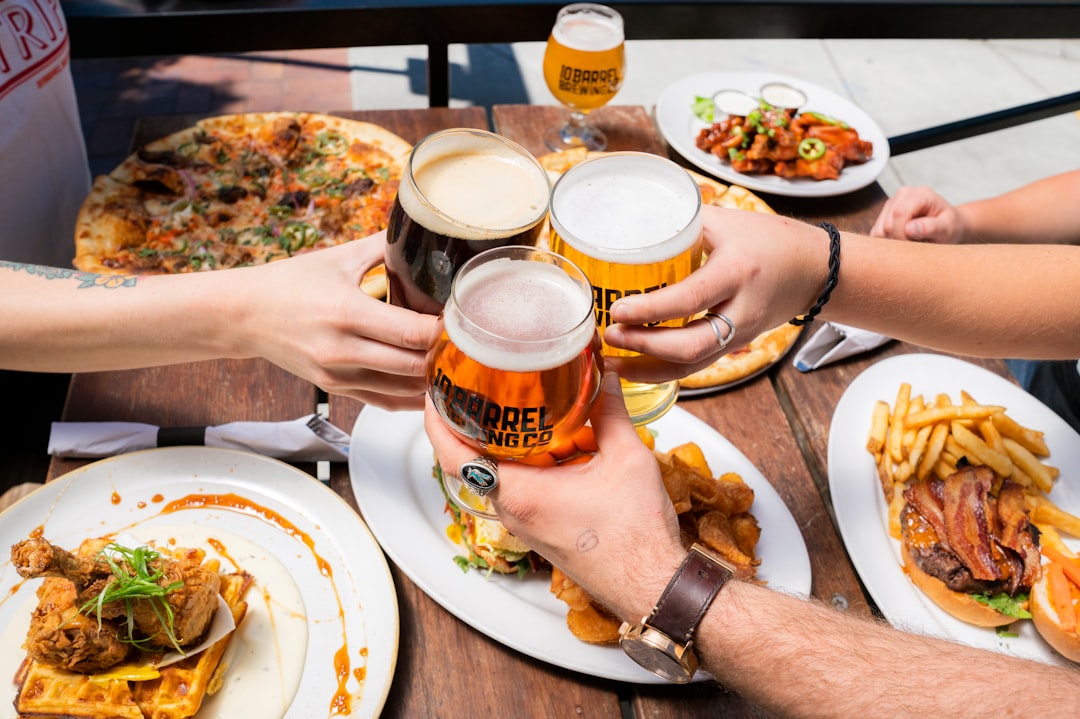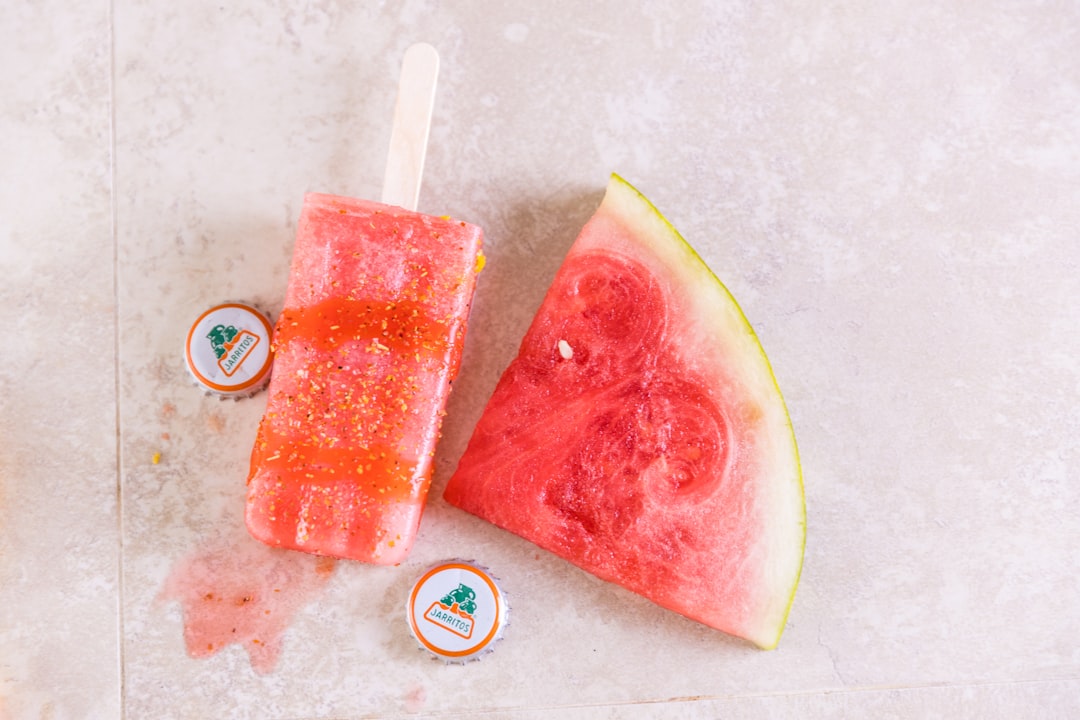The history of pink drinks is a fascinating journey that intertwines cultural significance, culinary innovation, and social evolution. The color pink has long been associated with femininity, romance, and playfulness, which has influenced the creation and popularity of various beverages. One of the earliest instances of a pink drink can be traced back to the 19th century with the emergence of cocktails like the Pink Lady, a gin-based drink that combined apple brandy and grenadine.
This cocktail not only showcased the aesthetic appeal of pink but also reflected the social dynamics of the time, where cocktails became a symbol of sophistication and leisure. As the 20th century progressed, pink drinks began to diversify, with the introduction of fruity concoctions that appealed to a broader audience. The rise of tiki culture in the mid-20th century brought forth vibrant pink cocktails like the Pink Flamingo, which featured rum, fruit juices, and colorful garnishes.
These drinks were not just about taste; they were an experience, often served in elaborate glassware adorned with tropical motifs. The playful nature of these beverages resonated with consumers, paving the way for the modern pink drink phenomenon that we see today.
Key Takeaways
- Pink drinks have a long history, dating back to ancient civilizations and gaining popularity in the 18th century.
- Social media has played a significant role in the recent trend of pink drinks, with influencers and platforms like Instagram driving their popularity.
- The rise of rosé wine has had a major impact on the popularity of pink drinks, with its light and refreshing taste appealing to a wide audience.
- Pink cocktails have become increasingly popular in the bar scene, with mixologists creating innovative and visually appealing drinks to cater to consumer demand.
- Pink drinks offer health benefits, with ingredients like berries and pomegranate providing antioxidants and potential anti-inflammatory properties.
The Influence of Social Media on the Pink Drink Trend
In recent years, social media has played a pivotal role in shaping trends across various industries, and the pink drink trend is no exception. Platforms like Instagram and TikTok have become breeding grounds for visually appealing content, where users share their experiences with aesthetically pleasing beverages. The hashtag #PinkDrink has garnered millions of posts, showcasing everything from Starbucks’ famous Pink Drink to homemade versions crafted by creative mixologists.
This visual-centric approach has not only popularized pink drinks but has also created a sense of community among enthusiasts who share tips, recipes, and personal stories. The influence of social media extends beyond mere aesthetics; it has also fostered a culture of experimentation and personalization. Users are encouraged to modify existing recipes or create entirely new ones, leading to an explosion of variations on traditional pink drinks.
For instance, the original Starbucks Pink Drink—a combination of strawberry acai base, coconut milk, and strawberries—has inspired countless adaptations featuring different fruits, syrups, and even non-dairy alternatives. This trend highlights how social media empowers consumers to engage with their food and drink choices actively, transforming them from passive consumers into creative contributors.
The Popularity of Rosé and its Impact on Pink Drinks

Rosé wine has experienced a meteoric rise in popularity over the past decade, significantly influencing the landscape of pink drinks. Once relegated to a niche market, rosé has become a staple at summer gatherings, brunches, and even formal events. Its light, refreshing profile appeals to a wide audience, making it an ideal base for various cocktails.
The versatility of rosé allows it to be paired with an array of flavors—from citrusy notes to herbal infusions—resulting in an exciting range of pink cocktails that cater to diverse palates. The impact of rosé on pink drinks is evident in the proliferation of rosé-based cocktails found in bars and restaurants. Mixologists have embraced this trend by crafting innovative drinks that highlight the wine’s characteristics while incorporating complementary ingredients.
For example, a popular cocktail known as the Rosé Spritz combines rosé wine with sparkling water and fresh fruit garnishes, creating a refreshing beverage perfect for warm weather. This trend not only elevates the status of pink drinks but also encourages consumers to explore new flavor combinations and experiences.
The Rise of Pink Cocktails in the Bar Scene
| Year | Number of Pink Cocktails on Menus | Percentage Increase |
|---|---|---|
| 2015 | 50 | N/A |
| 2016 | 75 | 50% |
| 2017 | 100 | 33.3% |
| 2018 | 150 | 50% |
| 2019 | 200 | 33.3% |
The bar scene has witnessed a remarkable transformation with the rise of pink cocktails, which have become synonymous with creativity and flair. Bartenders are increasingly experimenting with ingredients that enhance both the visual appeal and flavor profiles of their drinks. The use of vibrant garnishes such as edible flowers, colorful fruit slices, and artisanal syrups has become commonplace in crafting these eye-catching beverages.
This trend reflects a broader movement within the cocktail industry toward artisanal craftsmanship and presentation. One notable example is the introduction of cocktails like the Pink Gin Fizz, which combines gin with tonic water and a splash of grenadine for a visually stunning drink that tantalizes both the eyes and taste buds. Additionally, bars are capitalizing on seasonal ingredients to create limited-time offerings that keep patrons engaged and excited about new flavors.
The rise of pink cocktails has not only diversified drink menus but has also encouraged patrons to embrace their adventurous side when it comes to beverage choices.
The Health Benefits of Pink Drinks
While pink drinks are often celebrated for their aesthetic appeal and delicious flavors, many also offer health benefits that contribute to their growing popularity. Ingredients commonly found in pink beverages—such as berries, hibiscus, and pomegranate—are rich in antioxidants and vitamins that promote overall health. For instance, strawberries are known for their high vitamin C content and anti-inflammatory properties, making them a nutritious addition to any drink.
Moreover, many pink drinks are crafted with natural ingredients that prioritize health-conscious choices. The trend toward using fresh fruits, herbal infusions, and low-sugar alternatives aligns with consumers’ increasing awareness of nutrition and wellness. For example, a pink smoothie made with beetroot, yogurt, and berries not only provides a vibrant color but also delivers essential nutrients that support digestion and boost energy levels.
As consumers become more health-conscious, the demand for pink drinks that offer both indulgence and wellness benefits continues to rise.
The Role of Pink Drinks in the Wellness Industry

The wellness industry has embraced pink drinks as part of a broader movement toward holistic health and self-care. Many consumers are seeking beverages that not only taste good but also contribute positively to their well-being. This shift has led to an increase in products marketed as “wellness drinks,” which often feature functional ingredients designed to enhance physical or mental health.
Pink drinks made with adaptogens—herbs believed to help the body adapt to stress—are becoming increasingly popular among health enthusiasts. Additionally, the aesthetic appeal of pink drinks aligns perfectly with wellness trends that emphasize mindfulness and self-care rituals. Many individuals are incorporating these beverages into their daily routines as a way to indulge in moments of pleasure while prioritizing their health.
Whether it’s sipping on a refreshing hibiscus iced tea or enjoying a vibrant berry smoothie bowl, pink drinks serve as a reminder to take time for oneself amidst the hustle and bustle of daily life.
The Marketing of Pink Drinks to Millennials
Millennials have emerged as a driving force behind many consumer trends, including the popularity of pink drinks. Marketers have recognized this demographic’s affinity for visually appealing products that align with their values—such as sustainability, health consciousness, and social responsibility. As a result, brands are strategically crafting marketing campaigns that highlight these aspects while showcasing the vibrant allure of pink beverages.
Social media plays a crucial role in reaching this audience effectively. Brands leverage platforms like Instagram to create visually stunning content that resonates with millennials’ desire for authenticity and connection. Influencer partnerships have become commonplace in promoting pink drinks, as influencers share their experiences with these beverages while emphasizing their unique qualities.
This approach not only enhances brand visibility but also fosters a sense of community among consumers who share similar interests.
The Cultural Significance of Pink Drinks
Pink drinks hold cultural significance across various societies, often symbolizing celebration, femininity, or even rebellion against traditional norms. In many cultures, pink is associated with joy and festivity; thus, pink beverages are frequently featured at celebrations such as weddings, baby showers, and summer parties. The act of sharing these drinks often fosters connections among individuals, creating memorable experiences centered around communal enjoyment.
Moreover, pink drinks can serve as a form of self-expression for individuals who choose to embrace this color in their beverage choices. In some contexts, opting for a pink drink can challenge societal expectations regarding gender norms or traditional notions of masculinity and femininity. This cultural significance adds depth to the enjoyment of these beverages beyond mere taste; it becomes an expression of identity and personal values.
The Diversity of Pink Drinks in Different Cultures
The diversity of pink drinks across cultures showcases how this color transcends geographical boundaries while adapting to local tastes and traditions. In Latin American countries, for instance, agua de jamaica—a refreshing hibiscus tea—is often enjoyed chilled and sweetened with sugar or honey. Its vibrant red-pink hue is not only visually appealing but also reflects cultural practices surrounding hospitality and communal gatherings.
In Asian cultures, particularly in Japan and Thailand, pink drinks often incorporate unique ingredients such as lychee or rose syrup. These beverages are celebrated for their delicate flavors and beautiful presentations, often served at special occasions or festivals. The incorporation of local ingredients into pink drinks highlights how cultural heritage influences beverage creation while maintaining the universal appeal associated with this color.
The Sustainability of Pink Drink Ingredients
As consumers become increasingly aware of environmental issues, sustainability has emerged as a critical consideration in the production and consumption of pink drinks. Many brands are now prioritizing sustainable sourcing practices for their ingredients—such as organic fruits or ethically harvested botanicals—to align with consumer values regarding environmental responsibility. This shift not only addresses concerns about climate change but also enhances the overall quality and integrity of the products being offered.
Additionally, there is a growing trend toward reducing waste in beverage production by utilizing by-products from other processes. For example, leftover fruit scraps from juice production can be repurposed into syrups or garnishes for pink cocktails. This approach not only minimizes waste but also encourages creativity among mixologists who seek innovative ways to incorporate sustainable practices into their craft.
The Future of the Pink Drink Trend
Looking ahead, the future of the pink drink trend appears promising as it continues to evolve alongside changing consumer preferences and societal values. As health consciousness grows among consumers, we can expect an increase in innovative formulations that prioritize natural ingredients while maintaining visual appeal. This may include more functional beverages infused with superfoods or adaptogens designed to enhance well-being.
Moreover, as sustainability becomes an integral part of consumer decision-making processes, brands will likely focus on transparency regarding ingredient sourcing and production methods. This emphasis on ethical practices will resonate particularly well with younger generations who prioritize sustainability in their purchasing choices. In conclusion, the multifaceted world of pink drinks reflects broader cultural shifts while celebrating creativity and innovation within beverage creation.
As this trend continues to flourish across various domains—from social media influence to wellness initiatives—it is clear that pink drinks will remain a vibrant part of our culinary landscape for years to come.



